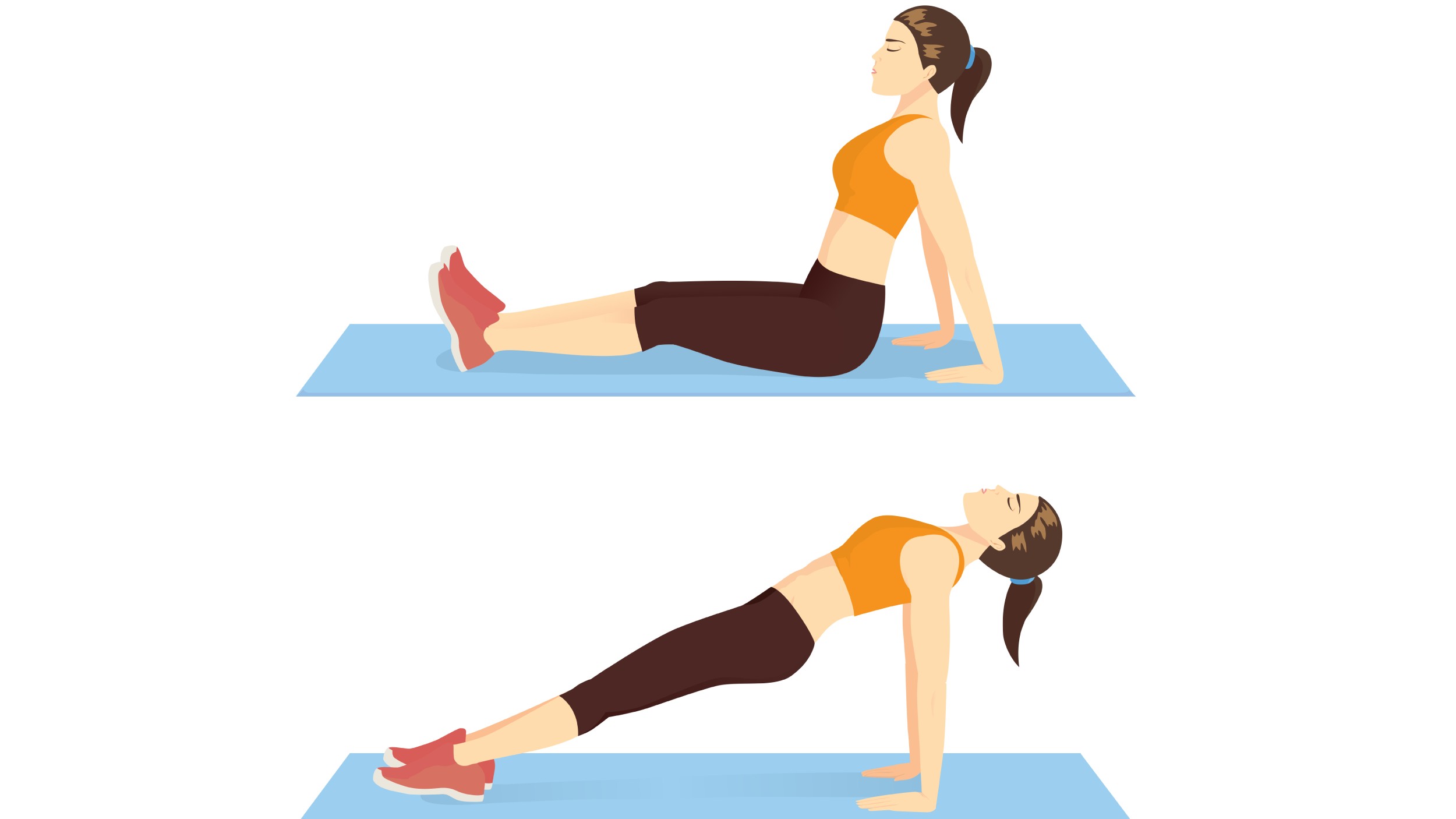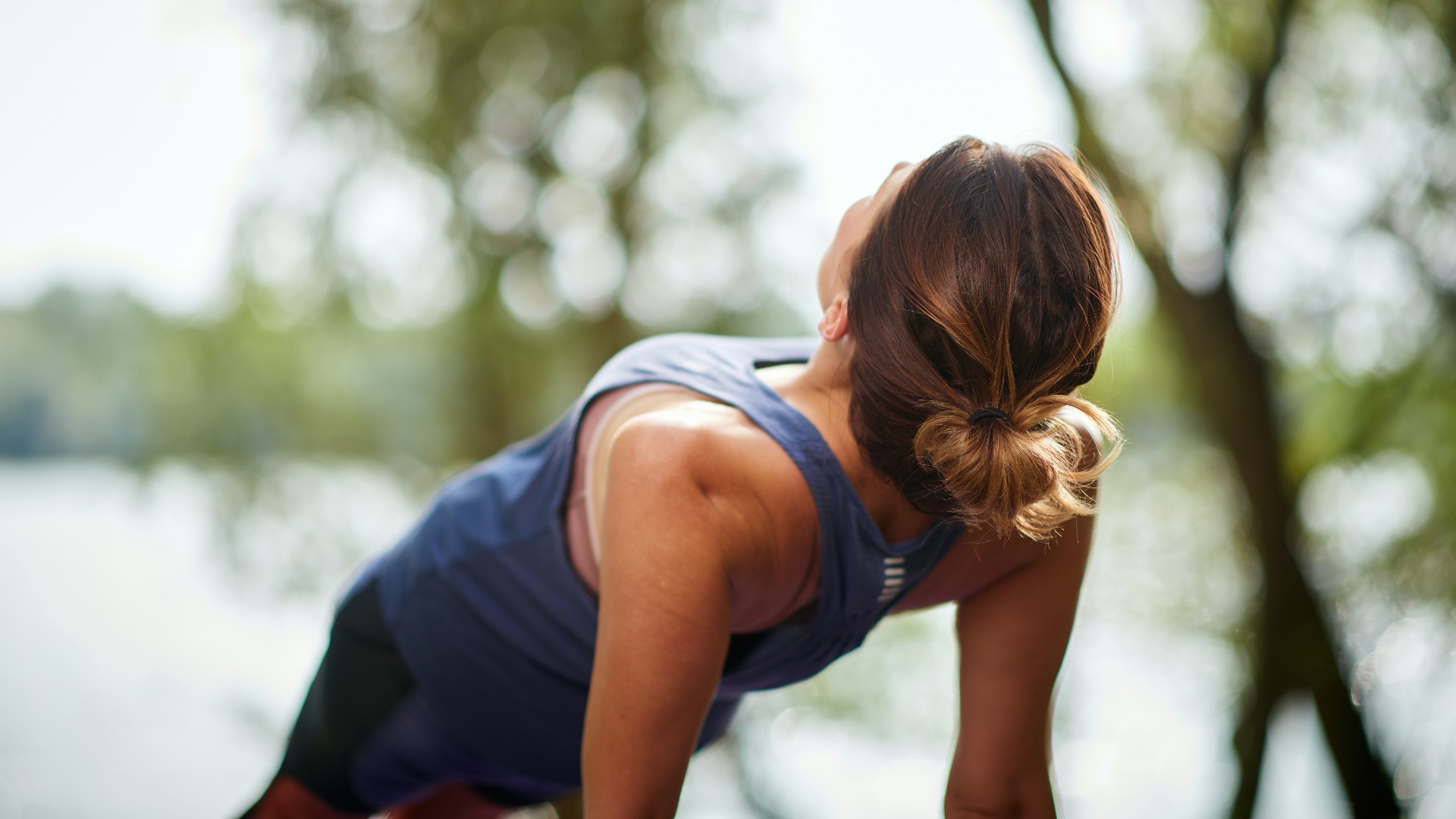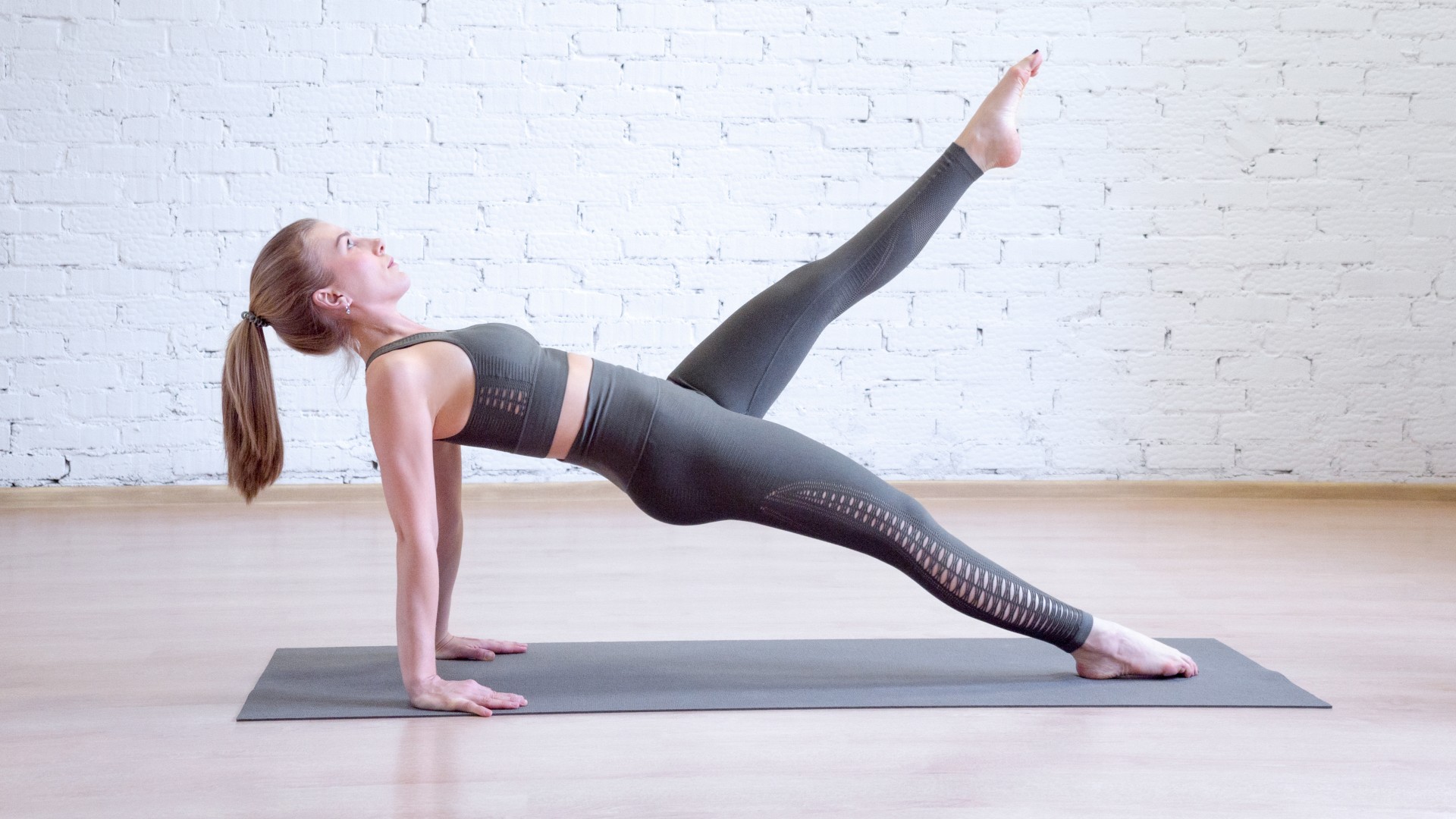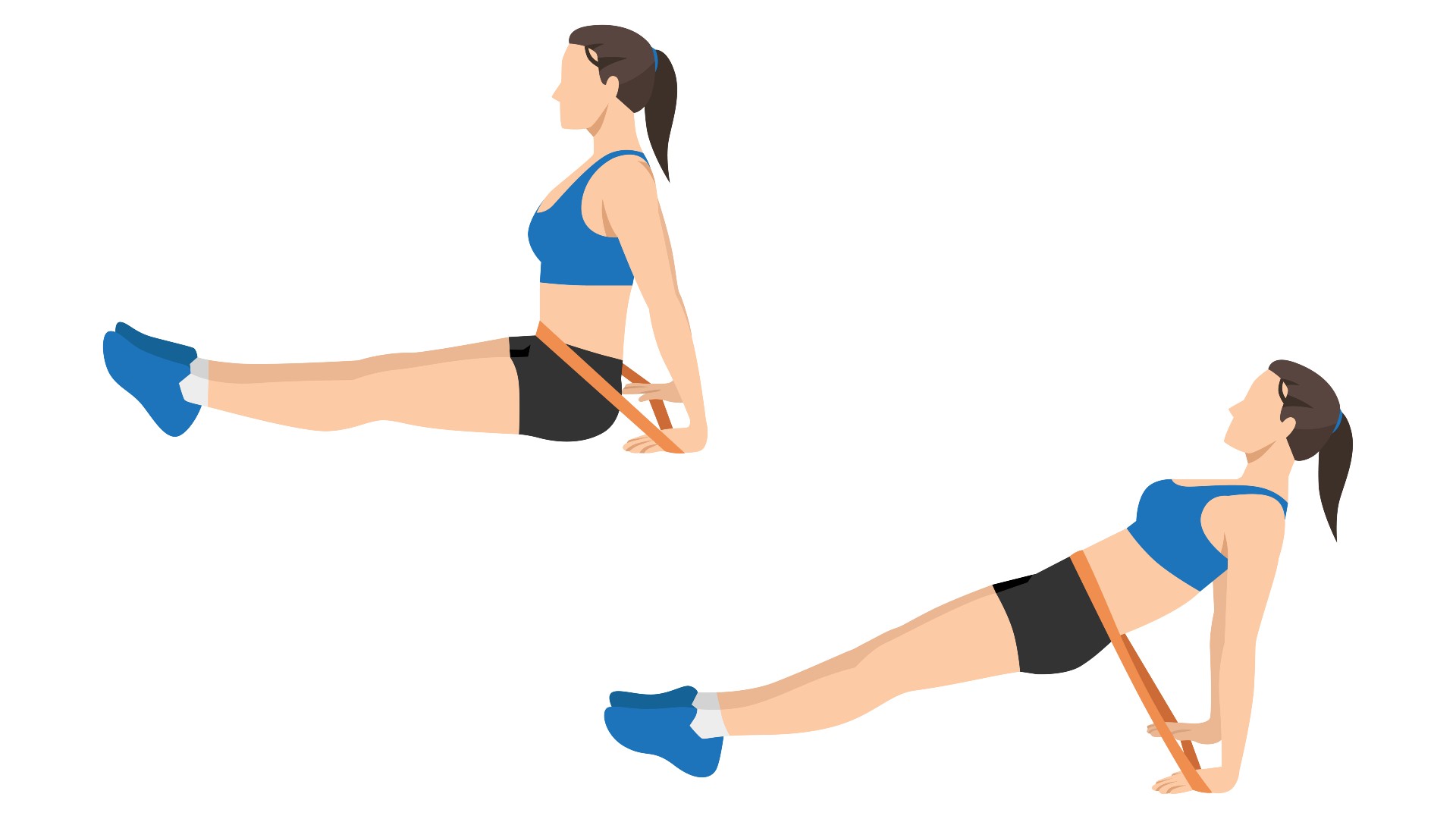If you haven’t seen the reverse plank before, flip a traditional straight-arm or forearm plank over, and you’ve nailed it.
Like many plank variations, this move targets your core, namely the rectus abdominis or “six-pack” muscles, shoulders, arms, back, glutes, and legs. And like most of our challenges at Tom’s Guide, you shouldn’t overtrain one muscle group or one exercise every day, so remember to give yourself ample recovery time if you practice planks.
For this fitness challenge though, I rolled out one of the best yoga mats for Yin yoga, which provided me with plenty of cushioning, and got to work smashing out 12-minute reverse planks each day for a week. Here’s my results after turning the plank on its head.
How to do reverse planks

Decide first whether you want to use forearms or straight arms. It’s personal preference, but anyone with weaker wrists might prefer the forearm, while those seeking to work their arms and shoulders harder might prefer keeping their arms straight.
How:
- Lie down face up on an exercise mat.
- Place your hands or elbows down on the mat behind your hips, stacking them underneath your shoulders.
- Extend both legs in front of you and press down with your heels.
- Engage your core, then send your hips upward into a plank position .
- Avoid letting your hips drop. Keep squeezing your stomach, creating one straight line from head to toe.
The reverse plank hits your posterior chain, meaning the muscles in your back, lower back, glutes, and hamstrings will particularly feel the burn throughout. You’ll need to contract your core hard to prevent your hips from sagging — a common mistake during this spicy flip-reverse plank variation. You could have abs of steel, and I still challenge you not to feel this one everywhere.
Does reverse plank burn belly fat?
If your goal of doing planks is for fat loss, remember that body fat percentage matters. It’s a different process for everyone, but factors like hormones, stress, sleep management, diet, and regular exercise play a role.
Planks help develop core muscle and posture and strengthen various muscle groups using isometric contraction (opens in new tab) (contraction without movement). But the move alone won’t sculpt you a six-pack of steel (we wish). If you’re curious, why not learn how to calculate your body fat percentage and why it matters?
I did 12-minute reverse planks every day for a week — here’s my results
84 minutes of reverse planks later.
Day 1
During the first day, I tried the forearm reverse plank and straight-arm variation to test the waters. I found the forearm version harder to hold for long periods, and I experienced far greater activation across my entire body using the straight-arm reverse plank, and I could maintain it for longer. So that settles it.
I opted for 45 seconds on, with 15 seconds of rest, and continued until I accrued 12 minutes (12 rounds).
Days 2 and 3
I didn’t feel particularly achy on day two, but my arms felt hard-worked, and I loved achieving more activation here.
During the reverse plank (especially for multiple rounds), you must focus on certain squeeze points to keep your form tight. It’s easy to dip your hips and hurt your lower back due to the loading position on your posterior chain, so if you try it, press through your heels, lift your hips, and squeeze your stomach muscles and glutes. Remember to breathe and look to the ceiling to relax your neck.
Give everything an extra hard squeeze and try to maintain that contraction as you hold — similar to these fiery 10-minute RKC planks I tried recently.
Day 4
I was getting far more back from a reverse plank than from most others, and by day four, I was feeling a satisfying burn across my entire body, especially in my hamstrings, core, arms, and shoulders.
At times I noticed my lower back, but not in a bad way. The move strengthens your back muscles, which could help improve posture if you keep your core properly engaged. I decided to mix it up for the next few days.

Days 5 and 6
Over the next two days, I felt confident with the timings, so I played with my variables instead. On day five, I decided to add one of the best adjustable dumbbells to my hips. I can’t stress enough that this won’t be suitable for everyone. If you have lower back issues or you’re new to core exercises, build foundational strength first using your body weight before adding any external load.
With a weight in place, I lifted my hips high and avoided that familiar sinking into my lower back, pressing through my heels hard. Nearing the end of each 45-second stint, I was visibly shaking, and the extra resistance was worth the pain. I woke to some hefty DOMS afterward, and my core felt torched. I kept this going into day six.
Day 7
Time to put my hips to work. I love leg raises in any form (I did 90 hanging leg raises every day for a week), so for my final 12 rounds, I tasked myself with six leg raises per leg each round.
Pointing my toes and lifting one leg at a time nice and high, I immediately noticed that this pulls focus, and form can begin to slip. I ran my checklist of squeeze points through as I lifted each leg, ensuring my hips stayed put. You might be asking ‘why on earth leg raises?’ but adding them builds strength in the hip flexor muscles while activating your quads and working the rectus abdominis even harder.
You might be asking ‘why on earth leg raises?’
Besides, lifting one leg off the ground means you’re performing a one-legged reverse plank — you need more balance, stability, core activation, and hip strength to pull it off. At this point, everything everywhere was shaking (especially my hips), and all my major muscle groups felt fatigued as I passed through the finish line. That was a tough one.

Verdict
Pressing through your heels (toes up) rather than pointing your toes forwards helps engage the hamstrings and glutes far more and makes reverse planks harder. If you look forwards, you might notice your hips drop, so look to the ceiling and relax your neck.
During leg raises you might notice your lower back kick into gear. If more core activation can’t solve it, get rid of it, and focus on other variables to make it harder — sets, timing, or even a weight vest if you’re an advanced exerciser. You could also add a resistance band (see below).
I was sore from this one, and although I have pretty strong hip flexors, my legs were trembling. I’ll be adding some stretching to my exercise routine this week, and I’ve listed some that I love below.

More from Tom’s Guide
Stay connected with us on social media platform for instant update click here to join our Twitter, & Facebook
We are now on Telegram. Click here to join our channel (@TechiUpdate) and stay updated with the latest Technology headlines.
For all the latest Technology News Click Here
